Reviews
Orlacs Hände
Robert Wiene
Austria, 1924
Credits
Review by Ian Johnston
Posted on 21 October 2009
Source Kino DVD
Categories 31 Days of Horror VI
At its heart The Hands of Orlac is a portrait of psychological terror. As such, and given that it’s inevitably labelled as “German expressionist” it fits nicely into Siegfried Kracauer’s definition of the expressionist style as “characterising the phenomena on the screen as the phenomena of the soul”. Yet, like so many Weimar-era films it’s only fitfully expressionist, with its broadly realist style occasionally allowing expressionist effects in certain scenes or even single shots for narrative or emotional effect. It’s really a world away from Wiene’s direction of The Cabinet of Dr Caligari; or perhaps we should say a world away from Caligari’s art direction? In this respect, Orlac is not out of the ordinary, for very few post-Caligari films adopted a consistent expressionist style—in fact, Barry Salt has argued that only six deserve the label: Caligari, Genuine, Von morgens bis mitternachts, Torgus, Raskolnikoff, and Waxworks. Interestingly enough, three of those six were directed by Wiene, who in some ways is one of the great mysteries of German silent cinema. His contribution to Caligari has always tended to be downgraded in favour of Janowitz and Mayer’s screenplay and Warm, Reimann and Rörhig’s set design but it’s hard to know how fair or unfair this is without seeing a lot more of the 47 films he directed.
The Hands of Orlac was adapted from a French potboiler by the now forgotten Maurice Renard, who had something of a specialty in body transformations, transplants, grafts, miniaturisations and so forth. Here, Paul Orlac, a brilliant concert pianist, has his hands, mangled in a dramatic train crash, replaced with those of Vasseur, a recently executed murderer. Shocked at learning of the source of his new hands, Orlac becomes increasingly convinced that he has no control over the hands, that they have a murderous will of their own. The familiar Doppelgänger motif of German silent cinema (itself sourced from Romantic fiction of the early nineteenth-century) takes form here in the one body, and in Orlac’s struggle with his hands we see both a fatalistic belief in intrinsic, immutable evil and a questioning of the power of rationality over darker, instinctual forces. In fact, the battle that Orlac seems to have lost from the beginning is more than anything a refutation of his doctor’s claim that “the spirit rules the handÉ nature and a strong will can overcome anything.”
A sexual dimension to this hand motif is established right at the start. The film opens with Orlac’s wife lying on the bed, an ecstatic look on her face as she pores over a letter from him that promises how “my hands will glide over your hair… I will feel your body beneath my hands.” (The original German intertitles have an even more erotic charge with “your body quivering beneath my hands.”) The hands represent the sexual connection between husband and wife, which explains her collapse to the floor when she learns of his injuries, her intense attention to his bandaged hands on the hospital bed, and the breathless way she looks forward to Orlac’s return from hospital and his first caresses.
When the Orlacs’ maid is later ordered to do her part in the criminal plot that is being spun around Orlac, this is even expressed as “Seduce his hands!” Here this part of the plot is rather unclear, so the sight of the maid crawling on the floor to kiss Orlac’s dangling hand seems more than a little perverse. But her change from ecstasy to terror after Orlac places both hands on the top of her head (it’s not clear here if she’s playacting as part of the plot or if it is a genuine reaction) points to the way Orlac’s physical transformation has already affected the relationship between husband and wife.
But at the start of the film Orlac’s hands are the sign of both his sexual and his artistic power, which Wiene immediately links through editing, ending with a close-up on Orlac’s hands on the piano. This early part of the film cuts repeatedly between separate locations to propel us towards the first dramatic climax, the train crash in which Orlac will lose his precious hands. There’s nothing expressionist about the style here, although there’s very effective play with light—the spotlight that’s trained on Orlac’s wife’s car as it races through the dark to the crash site; or the flurry of lights in the confusion of the crash itself.
Expressionist touches start to emerge once the story focuses on the dilemma of Orlac’s new hands. There’s a constant intercutting between close- and medium-shots to extreme long shots of these excessively large rooms, with large expanses of empty space (a visualisation of Orlac’s existential distress), abstract geometric patterns, and areas of shadow at the edges into which he can be drawn. Camera effects will also be used: Vasseur’s head floats, large and disembodied, over Orlac’s hospital bed, to be replaced by an outstretched arm whose clenched fist presses down on Orlac’s sleeping body; or, when Orlac reads in a café about Orlac’s crimes, his state of mental collapse is replicated as the image shifts out-of-focus.
But the one consistent element of expressionist style is to be found in Conrad Veidt’s performance. This is as startling a performance as the tortured somnambulist Cesare in The Cabinet of Dr Caligari or the perpetually-grimacing Gwynplaine in The Man Who Laughs. Veidt turns his body into an instrument of artistic style, resolutely anti-realist (as Expressionism in essence always was) as every aspect of his body, from the stiff, jerky movement of his limbs to the three furrowed lines he manages to maintain in his brow, works to give literal exterior form to the tortures that Orlac is suffering within. The power of this performance still exerts its hold today, and it stands in absolute contrast to the work of any other actor in the film, all who play within the confines of conventional realism; indeed, when Alexandra Sorina (playing Orlac’s wife) indulges in some jerky arm and body movements herself, it comes across as rather bad silent movie acting histrionics, never part of a concerted, integrated acting project like Veidt’s work. In this respect, Veidt was nothing short of a genius.
In the end all these torments are revealed to have no existence outside of Orlac’s own mind. The film practices a transformation as radical as Orlac’s own surgery, completely refuting the fantastic plot elements (even, disappointingly, the idea of Vasseur’s head having been re-attached to his body post-execution) and replacing them with a conventional crime story that even involves the police in a stake-out at the end. Still, when the film ends on a close-up of Orlac’s hands held up before the audience as they press his wife’s head close to his own, we still can’t be quite rid of what we’ve experienced before—almost as if, just as the maid did, his wife may now cry out in horror.
More 31 Days of Horror VI
-

From Beyond
1986 -
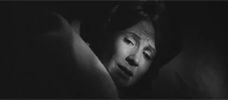
The Haunting
1963 -
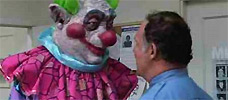
Killer Klowns from Outer Space
1988 -

Shock ‘Em Dead
1991 -

Critters
1986 -

Critters 2
1988 -

The Fall of the House of Usher
1928 -
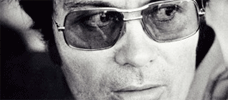
Jonestown: The Life and Death of Peoples Temple
2006 -

In the Mouth of Madness
1994 -

Winterbeast
1991 -
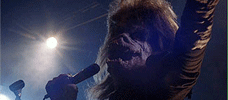
Black Roses
1988 -

Needful Things
1993 -
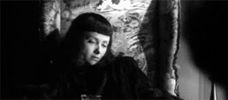
The Seventh Victim
1943 -
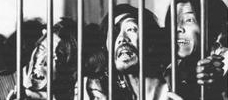
A Page of Madness
1926 -

Holocaust 2000
1977 -
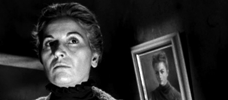
The Man and the Monster
1958 -
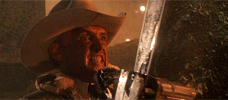
The Texas Chainsaw Massacre 2
1986 -

Trick or Treat
1986 -
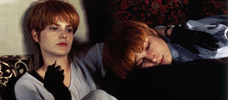
Single White Female
1992 -

Trouble Every Day
2001 -
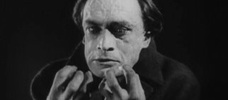
The Hands of Orlac
1924 -

The Devil’s Advocate
1997 -
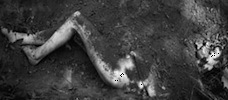
Nocturne
1998 -

Hardware
1990 -

Hard Rock Zombies
1985 -

The Slumber Party Massacre
1982 -
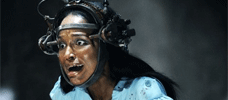
Saw VI
2009 -
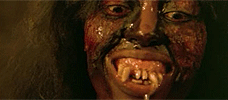
Zombi 4: After Death
1988 -
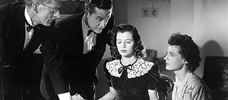
The Uninvited
1944 -

Hausu
1977
We don’t do comments anymore, but you may contact us here or find us on Twitter or Facebook.



